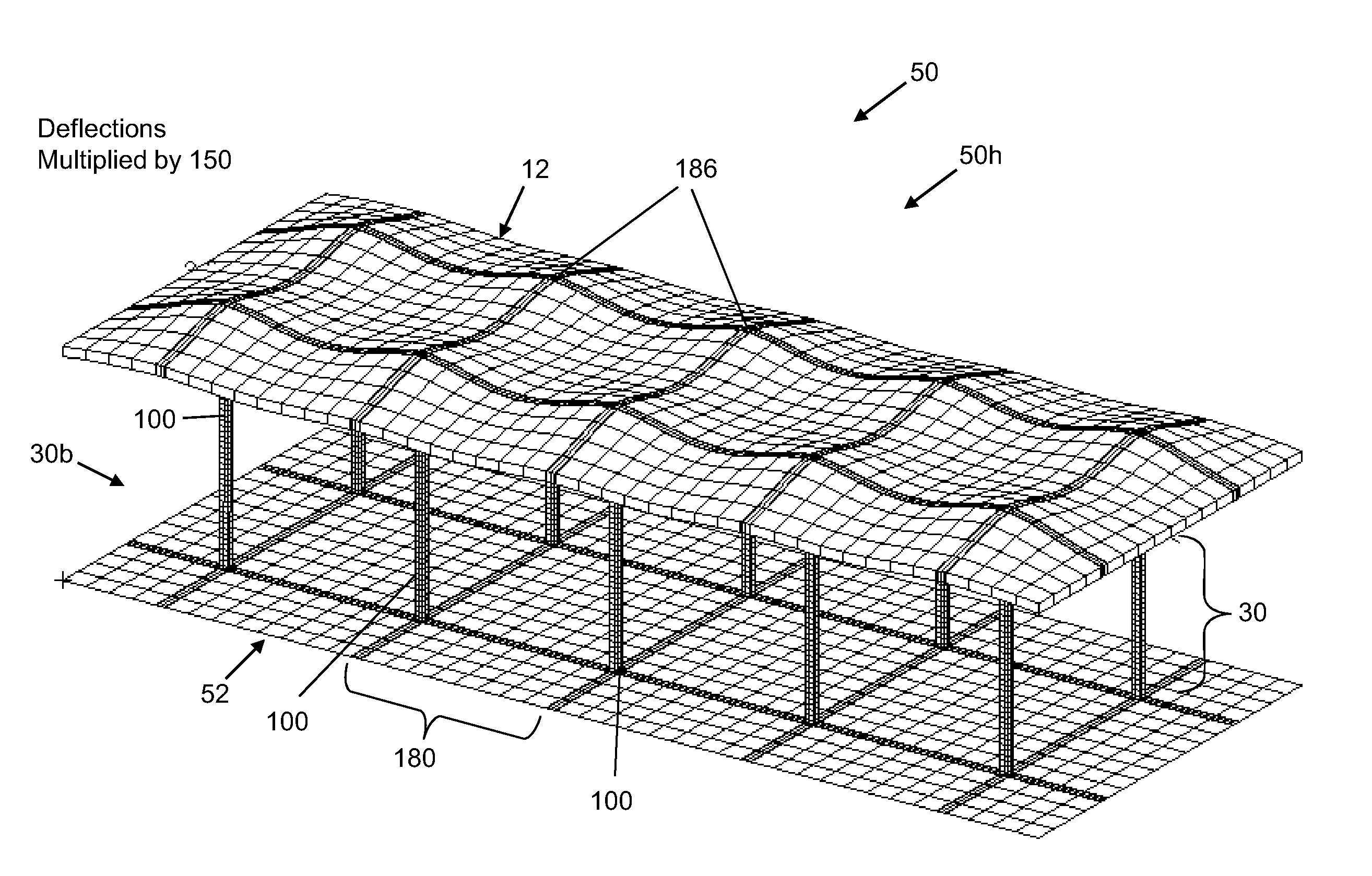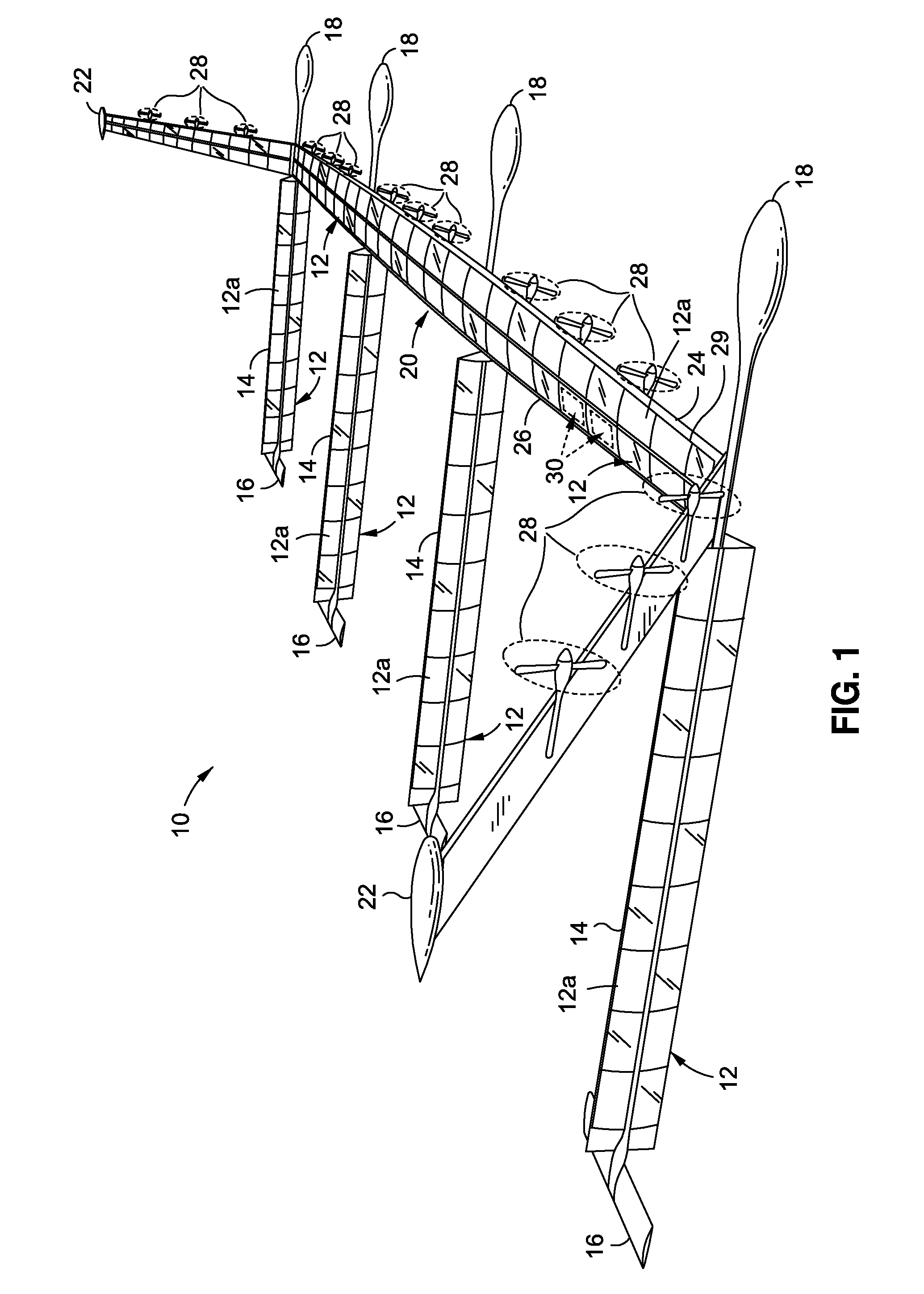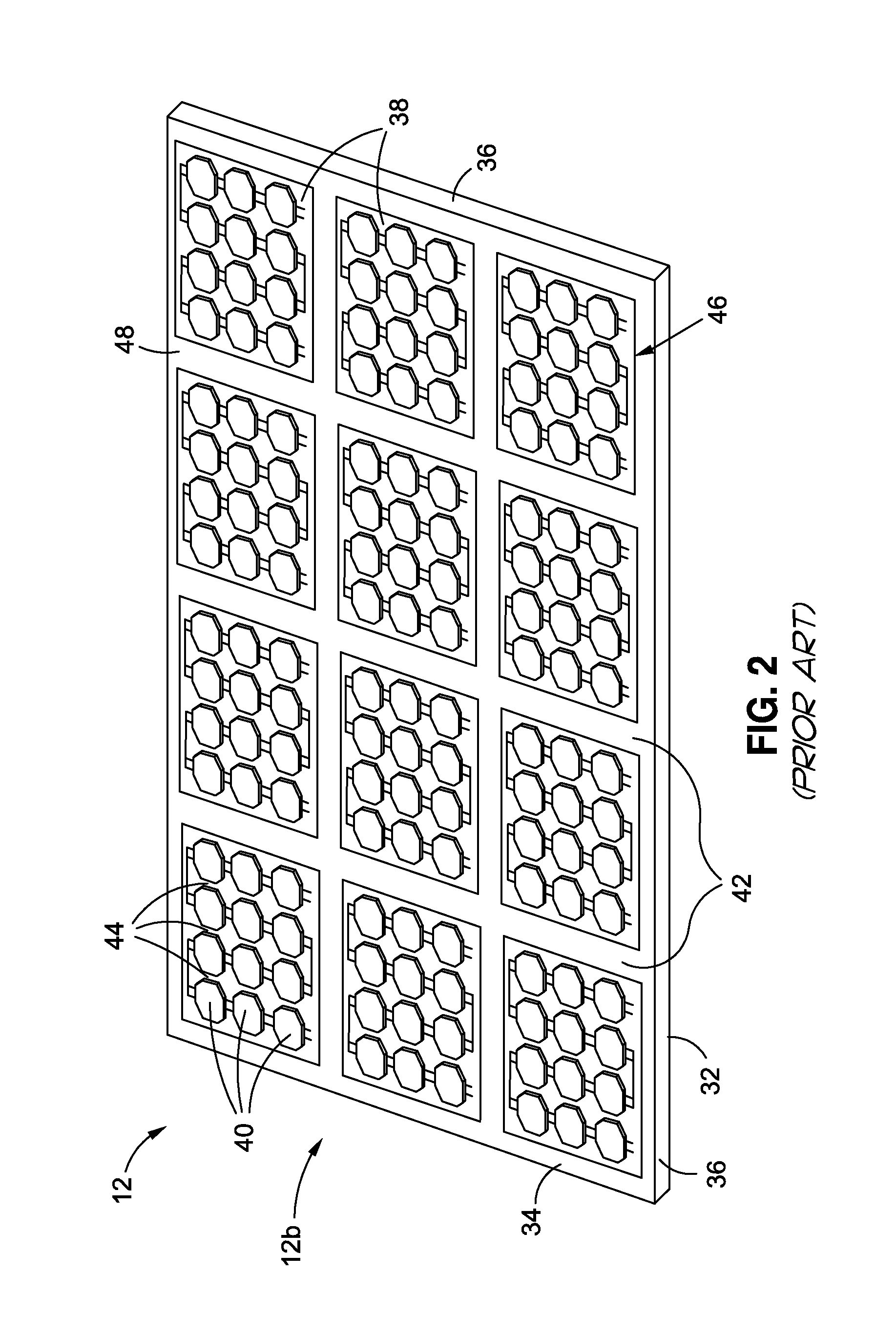Strain Isolation Layer Assemblies and Methods
a technology of isolation layer and assembly method, which is applied in the direction of energy-efficient board measures, pv power plants, transportation and packaging, etc., can solve the problems of brittleness and limited use of known photovoltaic solar cells or solar panel arrays, the connection or mounting of known photovoltaic solar cells or solar panels to structures, and the strain level of photovoltaic solar cells or solar panel arrays being forced to approximate the same strain level. , to achieve the effect o
- Summary
- Abstract
- Description
- Claims
- Application Information
AI Technical Summary
Benefits of technology
Problems solved by technology
Method used
Image
Examples
Embodiment Construction
[0050]Disclosed embodiments will now be described more fully hereinafter with reference to the accompanying drawings, in which some, but not all of the disclosed embodiments are shown. Indeed, several different embodiments may be provided and should not be construed as limited to the embodiments set forth herein. Rather, these embodiments are provided so that this disclosure will be thorough and complete and will fully convey the scope of the disclosure to those skilled in the art.
[0051]Now referring to the Figures, FIG. 1 is an illustration of a perspective view of an aircraft 10 which may incorporate one or more advantageous embodiments of a strain isolation layer assembly 50, 50a-50h, 50j (see FIGS. 4A-13C) of the disclosure. As shown in FIG. 1, the aircraft 10 is preferably solar powered and comprises one or more rigid solar layers 12, such as in the form of solar panels 12a. As further shown in FIG. 1, the aircraft 10 further comprises fuselages 14, tails 16, control system hou...
PUM
 Login to View More
Login to View More Abstract
Description
Claims
Application Information
 Login to View More
Login to View More - R&D
- Intellectual Property
- Life Sciences
- Materials
- Tech Scout
- Unparalleled Data Quality
- Higher Quality Content
- 60% Fewer Hallucinations
Browse by: Latest US Patents, China's latest patents, Technical Efficacy Thesaurus, Application Domain, Technology Topic, Popular Technical Reports.
© 2025 PatSnap. All rights reserved.Legal|Privacy policy|Modern Slavery Act Transparency Statement|Sitemap|About US| Contact US: help@patsnap.com



